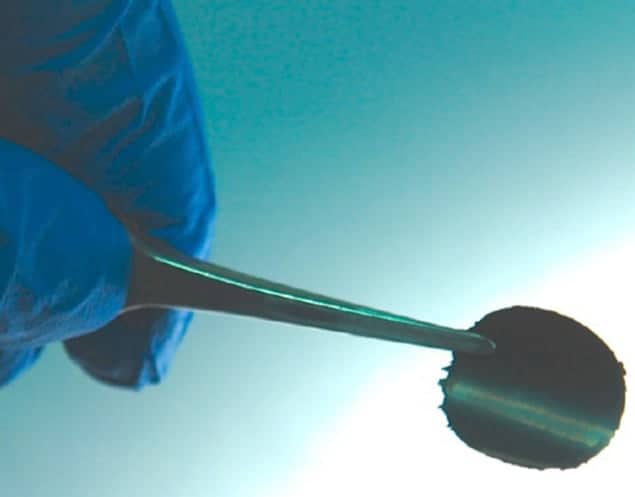
Researchers in the US have taken an important step towards understanding exactly how single-walled carbon nanotubes (SWCNTs) boost the performance of lithium-ion batteries. The team found that metallic SWCNTs are able to accommodate more lithium atoms than semiconducting SWCNTs, which could lead to better performance. The research also reveals how semiconducting SWCNTs could be made to take up more lithium. The work could have a broad practical impact because lithium-ion batteries are used in a range of portable electronic devices.
SWCNTs are frequently employed as additives in lithium-ion batteries to improve the lifetime of the battery and its charge and discharge rates. However, SWCNTs come in two electronic flavours – metallic and semiconducting – and it was not clear whether both types were boosting performance or if one flavour was responsible for the bulk of the improvement.
Spacing is important
Now, researchers at Northwestern University and the Argonne National Laboratory in the US have found that a nanotube’s electronic type affects how easily it can accommodate lithium. Their research also reveals that the spacing between nanotubes in a battery also appears to influence the uptake of lithium.
The team, led by Mark Hersam of Northwestern, used a technique called density gradient ultracentrifugation (DGU) to separate metallic and semiconducting SWCNTs. SWCNTs are always produced in a mix of both electronic types – typically 33% metallic and 67% semiconducting.
The researchers dispersed unsorted tubes in water using two surfactants. Because the surfactant wraps around the tubes in a different way depending on their electronic type, the metallic and semiconducting tubes end up with different buoyant densities and can therefore be separated using DGU.
Sorting tubes
After sorting the tubes into metallic and semiconducting batches, the team processed them into freestanding films using vacuum filtration. The films were subsequently used as the cathodes in lithium-ion half-cell batteries with the lithium metal as the anode. The researchers measured properties such as cell capacity, charge-transfer (or Coulomb) efficiency, and battery cycling rates of devices made from each type of tube to determine how easily each one took up lithium. These studies were augmented with theoretical calculations.
Hersam and colleagues found that metallic SWCNTs accommodate lithium much more efficiently than their semiconducting counterparts. Another important discovery was that, if made denser, the semiconducting SWCNT films also begin to take up lithium at levels that are comparable to metallic SWCNTs. This is because lithium is more easily accommodated at the junctions between tubes, says Hersam.
Fundamental questions
“This work answers some fundamental questions concerning how lithium interacts with SWCNTs, which in turn affects the performance of lithium-ion batteries that contain these carbon nanostructures,” he says. “SWCNTs improve battery performance thanks to increased charge and discharge rates, as well as having the added advantage of prolonging battery life.”
The team says that it is now exploring the use of other nanomaterials, such as graphene, as additives or coatings in the electrodes of lithium-ion batteries. “By understanding the attributes and limitations of each class of material, we will be able to rationally design composites that maximize overall battery performance,” says Hersam.
The current work is described in ACS Nano.
- This article first appeared on nanotechweb.org



